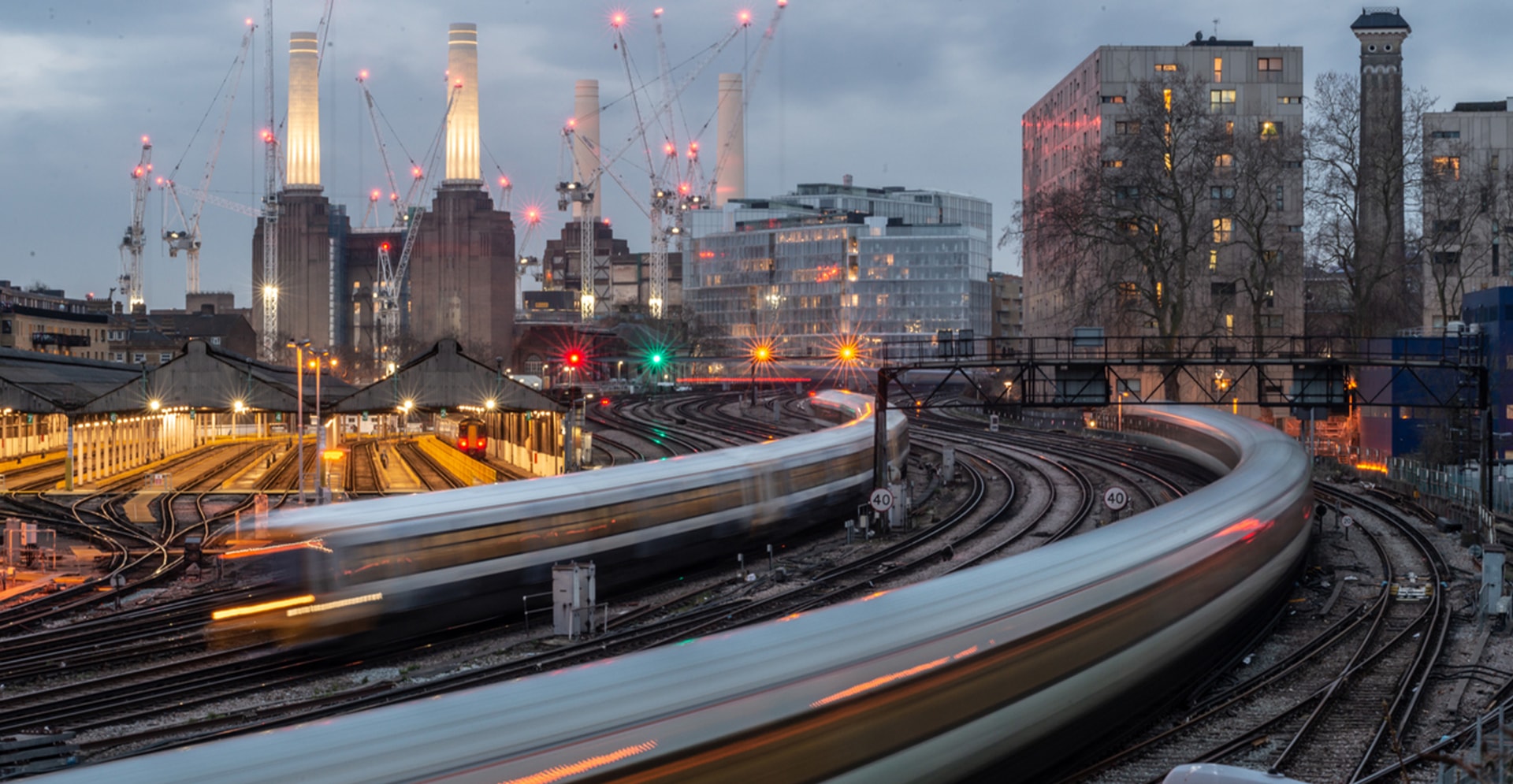The UK railway network is the busiest in Europe, buckling under the weight of 1.7 billion passenger journeys every single year. The importance of meeting growing customer needs with a reliable and affordable service has never been greater.
Although 70% of delays are the result of problems stemming from other areas of the network, the efficient delivery of renewals and enhancements will have a key role in improving customer experience. Control Period 6 is rapidly approaching, and an expanded investment programme will see Network Rail striving to address the challenges of running a busy and congested network. But what role can a more innovative approach play?
The route to productivity
Rail has an important role in economic development, and is critical for stimulating growth, jobs and productivity. Yet system constraints, including reliability, weather and limits on track speed, all have an impact on the smooth running of the network. These all need to be addressed before we see any improvements in performance, but the scale of work needed to keep the network operating at current levels of reliability, let alone add new capacity, is immense.
Network Rail has been allocated over £50bn in funding for the period 2019-24 to operate, maintain and enhance the railway. While overall efficiency improvements are expected to deliver savings of £2.6bn over this period, better pre-planning and greater collaboration between clients, customers and suppliers will have a significant part to play in improving long-term resilience.
Focus on efficiency and value for money
In looking at how the network will operate in CP6, one of the biggest opportunities is the extension of route devolution, which has already radically altered the relationship between Network Rail and its customers; the train and freight operating companies. Routes can now set their own performance targets, which in turn gives much greater freedom for them to plan investments in direct response to local and regional needs. Another major change is that the five-year budget is fixed. As a result, Network Rail and its teams will need to provide assurance of results by placing more emphasis on scope definition, accurate cost estimates and sustainable long-term delivery.
Other big changes include the introduction of digital rail, based on electronic train control systems (ETCS) and traffic management. Wider deployment of new technology will require a shift in thinking towards more innovative approaches focused on delivering more capacity in the network, with less investment in fixed infrastructure.
For each and every improvement scheme delivered under CP6, Network Rail will need to ensure that efficiency and value for money are better managed than in previous control periods. Furthermore, getting the balance right between local priorities and managing integration with big national programmes like HS2 and the Crossrail Elizabeth Line is going to be a major challenge.
Engineering enhancements
Enhancements can vary from safety and access improvements to long-term, multi-phase programmes to deliver capacity improvements such as the Thameslink Programme or the redevelopment of London Bridge Station.
Yet while large volumes of renewal work, like track and overhead line replacements and bridge strengthening, can be delivered using tried and tested solutions, all aspects will benefit from greater engineering input and innovative approaches, particularly using digital technologies. This can transcend the project lifecycle from the initial definition of requirements through to developing the final design ready for hand-over to a Design & Build contractor and on into operations and maintenance.
Improving Delivery
With rail funding programmes under ever-greater scrutiny, improving the delivery of capital investment is crucial.
Areas where the delivery process can be improved include:
- Strategic planning: Investment has to be aligned with route plans, which are typically owned by train operating companies. It may also be possible to achieve the desired result with a different approach to spend, for example by increasing car parking capacity by renting spaces, rather than building new facilities.
- Stakeholder input: Closer co-operation creates opportunities to capitalise on wider knowledge. For example, accessing operations and asset management expertise to support the need to make all investments ‘digital railway ready’.
- Integrating 4D and 5D cost and schedule with the engineering solution: Integrating teams with the capability to dynamically link design development with commercial implications is crucial in providing assurance of outcome.
- Decision support and consents: Tools like 4D and 5D BIM are critical for managing a wide range of stakeholders and can help to accelerate the design and approvals process. Equally using complimentary approaches such as Virtual Reality (VR), Augmented Reality (AR) and HoloLens can support project development, stakeholder engagement and works planning by providing safer alternatives to site-based activities.
- Building projects into programmes: Creative bundling of projects can help to reduce cost, accelerate procurement and is a great way to align commercial and engineering expertise.
- Handover management: It’s common to appoint separate engineering teams to different project stages, enabling the client to access resources through a competitive process each time. Managing delivery to mitigate the risks of delay, particularly through quality control of the process and the deliverables, makes a big contribution to accelerating progress.
- Smart use of technology: Wider use of survey technology like LIDAR and ground sensing radars can help to de-risk aspects of design and delivery that pose the greatest challenge to efficiency.
- Data and data analytics: The use of data and data analytics in conjunction with asset management techniques, digital platforms and BIM are providing valuable insight into how the railway operates and how failures occur. This leads to innovative approaches such as Performance Based Maintenance, which ultimately benefit railway performance and customer experience.
Looking to the future
Given the scale of the investment programme outlined by the Office of Rail and Road (ORR), it is essential that improvement and enhancement projects are delivered effectively and efficiently across the five-year control period. Innovation and high-quality engineering can contribute to this by facilitating the delivery process and by improving the performance of the rail system.
Looking ahead there are significant challenges, not least the development of the skills needed to apply new technology in a smart way. However, there are also great opportunities, including an increased engineering focus on smart asset management and performance-based maintenance that will do much in terms of helping to transform the nation’s railways.
A longer version of this article appeared in Building on 30 November 2018.




